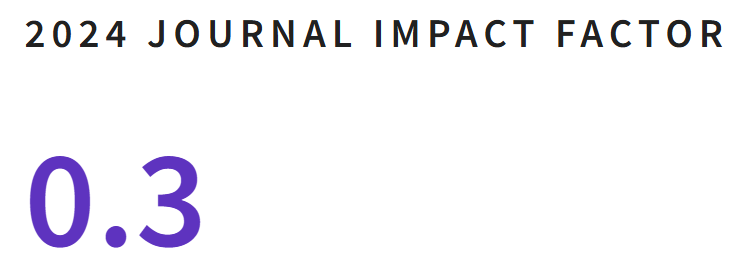Validation of the inventory of acts of cyberbullying in the workplace (ICA-W)
DOI:
https://doi.org/10.35588/rhavdd53Keywords:
Harassment, Labor conflict, Labor relations, Workplace well-being, Electronic mediaAbstract
Workplace cyberbullying is an emerging phenomenon that has received little attention in the academic literature. This research sought to validate an instrument to measure cyberbullying in work contexts. The ICA-W scale of Vranjes et al. (2018) was translated, and an exploration of its psychometric properties was conducted. Validity was assessed by exploratory factor analysis and through nomological network analysis with the constructs of psychological harassment, life satisfaction, and subjective happiness. The results support the quality of the instrument, finding a reliability of .88 and convergent validity with the psychological harassment scale (rho = .52), as well as divergent validity with the satisfaction with life scale (rho = -.17). Factor analysis revealed a unidimensional solution that explained 65% of the variance. It is concluded that the ICA-W scale is reliable and valid, but assuming certain restrictions in its application in Chilean workers.
Downloads
References
Álvarez, Y. (2011). El poder y las relaciones de poder en las organizaciones. Algunas aproximaciones teóricas desde las perspectivas de Michel Foucault, Pierre Bourdieu y Max Weber. Gestión y Sociedad, 4(1), 145-161. https://ciencia.lasalle.edu.co/gs/vol4/iss1/10/
Ansoleaga, E. (2022). Buenos tiempos para malos liderazgos: Un análisis de la relación entre los liderazgos destructivos y la salud mental de los trabajadores. En Congreso Chileno de Psicología del Trabajo y de las Organizaciones: «Nuevas formas de organizar el trabajo en tiempos de cambio: Dónde estamos y hacia dónde vamos», Concepción: Universidad de Concepción.
Anwar, A., Hung, D. y Ahmed, A. (2020). Workplace Cyberbullying and Interpersonal Deviance: Understanding the Mediating Effect of Silence and Emotional Exhaustion. Cyberpsychology, Behavior, and Social Networking, 23(5), 290-297. https://doi.org/10.1089/cyber.2019.0407
Ato, M., López-García, J. y Benavente, A. (2013). Un sistema de clasificación de los diseños de investigación en Psicología. Anales de Psicología, 29(3), 1038-1059. https://dx.doi.org/10.6018/analesps.29.3.178511
Camacho, A., & Mayorga, D. (2017). Mal clima organizacional institucionalizado, acoso y riesgos laborales psicosociales. Perspectiva jurídica. Equidad y Desarrollo, (29), 143-160. https://doi.org/10.19052/issn.1692-7311
Cárdenas, M., Barrientos, J., Bilbao, Á., Páez, D., Gómez, F. y Asún, D. (2012). Estructura factorial de la escala de satisfacción con la vida en una muestra de estudiantes universitarios chilenos. Revista Mexicana de Psicología, 29(2), 157-164. https://www.redalyc.org/articulo.oa?id=243030190006
Castillo, V. (2021). Desafíos sociales emergentes en la era de la digitalización. Fenómenos más allá del bien y el mal. En V. Castillo (ed.), Tecnología digitales al servicio de la intervención y gestión social (pp. 57-77). Santiago de Chile: RIL Editores. https://rileditores.publica.la/reader/tecnologias-digitales-al-servicio-de-la-intervencion-y-gestion-social?preview=true
Castillo, V. y Araya, M. (2021). Proyectos y tendencias de la digitalización y sus porvenires en la sociedad. En V. Castillo (ed.), Tecnologías Digitales al Servicio de la Intervención y Gestión Social (pp. 33-55). Santiago de Chile: RIL Editores. https://rileditores.publica.la/reader/tecnologias-digitales-al-servicio-de-la-intervencion-y-gestion-social?preview=true
Cowan, R. (2011). Yes, we have an anti-bullying policy, but€: HR professionals' understandings and experiences with workplace bullying policy. Communication Studies, 62(3), 307-327. https://doi.org/10.1080/10510974.2011.553763
Cowan, R. (2018). When workplace bullying and mobbing occur: The impact on organizations. En M. Duffy y D. Yamada (ed.), Workplace Bullying and Mobbing in the United States 2 Volume (pp 201-219). California: ABC-CLIO.
Duffy, M. (2009). Preventing workplace mobbing and bullying with effective organizational consultation, policies, and legislation. Consulting Psychology Journal: Practice and Research, 61(3), 242-262. https://doi.org/10.1037/a0016578
Farley, S., Coyne, I., Axtell, C. y Sprigg, C. (2016). Design, development and validation of a workplace cyberbullying measure, the WCM. Work & Stress, 30(4), 293-317. https://doi.org/10.1080/02678373.2016.1255998
Fernández, L. (2017). Diseño, construcción y validación de una escala para medir el cyberbullying en un ambiente laboral. Forum Empresarial, 22(2), 59-84. https://doi.org/10.33801/fe.v22i2.13626
Galletta, D., Confuorto, M., Improta, G. y Marcelli, V. (2019). The Assessment of Mobbing Damage: When the Psychological Pain Becomes Physical. Journal of Forensic Science & Criminology, 7(1), 101. http://www.annexpublishers.co/full-text/JFSC/7101/The-Assessment-of-Mobbing-Damage-When-the-Psychological-Pain-Becomes-Physical.php
García Plá, M. (2021). El ciberacoso como nueva modalidad de acoso laboral: Algunas reflexiones y propuestas desde la realidad socio-jurídica cubana. En L. Torres y L. Guevara (ed.), Violencia en el mundo del trabajo. Revisión del flagelo en Iberoamérica (pp. 111-147). Bogotá: Universidad Libre.
Hamzaoglu, N., Yayak, A. y Turk, B. (2021). Evaluation of mobbing perception levels of health employees. Health Services Management Research, 35(2), 1-9. https://doi.org/10.1177/09514848211001689
Kalleberg, A. (2009). Precarious work, insecure workers: Employment relations in transition. American sociological review, 74(1), https://doi.org/10.1177/000312240907400101
Kreiner, B. y RothenhÄusler, H.-B. (2008). Does mobbing cause posttraumatic stress disorder? Impact of coping and personality. Neuropsychiatr: Klinik, Diagnostik, Therapie und Rehabilitation, 22(2), 112-123. https://pubmed.ncbi.nlm.nih.gov/18606113/
Leymann, H. (1986). Vuxenmobbning: om psykiskt våld i arbetslivet. Crowding stress. https://books.google.cl/books/about/Vuxenmobbning.html?id=uCwoNQAACAAJ&hl=en&output=html_text&redir_esc=y
Leymann, H. (1996). The content and development of mobbing at work. European Journal of Work and Organizational Psychology, 5(2), 165-184. http://dx.doi.org/10.1080/13594329608414853
Leymann, H. y Gustafsson, A. (1996). Mobbing at work and the development of post-traumatic stress disorders. European Journal of Work and Organizational Psychology, 5(2), 251-275. https://doi.org/10.1080/13594329608414858
Littlewood, H., & Uribe, J. (2018). Psicología organizacional en Latinoamérica. Manual Moderno.
Lloret-Segura, S., Ferreres-Traves, A., Hernández-Baeza, A. y Tomás-Marco, I. (2014). El análisis factorial exploratorio de los ítems: una guía práctica, revisada y actualizada. Anales de Psicología, 30(3), 1151-1169. https://dx.doi.org/10.6018/analesps.30.3.199361
Lyubomirsky, S. y Lepper, H. (1999). A measure of subjective happiness: Preliminary reliability and construct validation. Social Indicators Research, 46(2), 137-155. http://dx.doi.org/10.1023/A:1006824100041
Molé, N. (2012). Labor Disorder in Neoliberal Italy: Mobbing, Wellbeing, and the Worplace. Indiana: Indiana University Press.
Morales, M. (2016). Aproximación al acoso laboral desde la legislación comparada. Boletín Mexicano de Derecho Comparado, (147), 71-98. https://doi.org/10.22201/iij.24484873e.2016.147.10640
Moyano, E. (2010). Exploración de algunas propiedades psicométricas de las escalas de satisfacción vital, felicidad subjetiva y autopercepción de salud. En E. Moyano (ed.), Calidad de vida y psicología en el bicentenario de Chile (pp. 447-470). Santiago: Mármor.
Moyano, E. y Barría, R. (2006). Suicidio y Producto Interno Bruto (PIB) en Chile: hacia un modelo predictivo. Revista Latinoamericana de Psicología, 38(2), 343-359. http://pepsic.bvsalud.org/pdf/rlp/v38n2/v38n2a08.pdf
Muñiz, J., Fidalgo, Á., García-Cueto, E., Martínez, R. y Moreno, R. (2005). Análisis de los ítems. Madrid: La Muralla
Pheko, M. (2018). Autoethnography and cognitive adaptation: two powerful buffers against the negative consequences of workplace bullying and academic mobbing. International Journal of Qualitative Studies on Health and Well-being, 13(1), 1459134. https://doi.org/10.1080/17482631.2018.1459134
Piñuel, I. y García, A. (2015). La evaluacion del mobbing. Cómo peritar el acoso psicológico en el ámbito forense. Buenos Aires: Sb editorial.
Porras, N. (2017). Análisis de la relación entre la salud mental y el malestar humano en el trabajo. Equidad y Desarrollo, (29), 161-178. http://dx.doi.org/10.19052/ed.4173
Puntriano, C. (2022). Reflexiones en torno al ciberacoso laboral en Perú. Giuristi: Revista de Derecho Corporativo, 3(5), 52-77. https://doi.org/10.46631/Giuristi.2022.v3n5.05
Raza, M., Dilshani, N. y Ali, M. (2021). A Comprehensive Review on Email Spam Classification using Machine Learning Algorithms. International Conference on Information Networking (págs. 327-332). IEEE. https://doi.org/10.1109/ICOIN50884.2021.9334020
Salama, P. (2018). “Nuevas tecnologías: ¿Bipolarización de empleos e ingresos del trabajo?” Revista Problemas de Desarrollo, 195(49), 3-25. https://doi.org/10.22201/iiec.20078951e.2018.195.64825
Tatar, Z. y Yüksel, Åž. (2019). Mobbing at Workplace –Psychological Trauma and Documentation of Psychiatric Symptoms. Archives of Neuropsychiatry, 56(1), 57-62. https://doi.org/10.29399/npa.22924
Tulunay, Ö. (2019). Examination of the Relationships between Mobbing and Psychological Symptoms in Teachers. Universal Journal of Educational Research, 7(3), 863-873. http://dx.doi.org/10.13189/ujer.2019.070328
Velázquez, Y. y Díaz, M. D. (2020). “Violencia y desigualdad laboral en México: revisión teórica desde una perspectiva de género. Andamios, 17(42), 423-440. https://doi.org/10.29092/uacm.v17i42.750
Vera-Villarroel, P., Celis-Atenas, K. y Córdova-Rubio, N. (2011). Evaluación de la Felicidad: Análisis Psicométrico de la Escala de Felicidad Subjetiva en Población Chilena. Terapia Psicológica, 29(1), 127-133. http://dx.doi.org/10.4067/S0718-48082011000100013
Vera-Villarroel, P., Urzúa, A., Pavez, P., Celis-Atenas, K. y Silva, J. (2012). Evaluación del Bienestar subjetivo: Análisis de la Escala de Satisfacción con la Vida en población chilena. Universitas Psychologica, 11(3), 719-727. https://doi.org/10.11144/Javeriana.upsy11-3.eswa
Verona, M., Déniz, J. y Santana, R. (2014). Consecuencias y responsabilidades de la empresa ante el mobbing. Ciencia y Sociedad, 39(3), 413-440. http://dx.doi.org/10.22206/cys.2014.v39i3.pp413-440
Vranjes, I., Baillien, E., Vandebosch, H., Erreygers, S. y De Witte, H. (2017). The dark side of working online: Towards a definition and an Emotion Reaction model of workplace cyberbullying. Computers in Human Behavior, 69, 324-334. https://doi.org/10.1016/j.chb.2016.12.055
Vranjes, I., Baillien, E., Vandebosch, H., Erreygers, S. y De Witte, H. (2018). When workplace bullying goes online: construction and validation of the Inventory of Cyberbullying Acts at Work (ICA-W). European Journal of Work and Organizational Psychology, 27(1), 28-39. https://doi.org/10.1080/1359432X.2017.1363185
Zhang, Z., Xiao, H., Zhang, L. y Zheng, J. (2022). Linking Cyberbullying to Job Strain: Roles of Ego Depletion and Self-Efficacy. Journal of Aggression, Maltreatment & Trauma, 31(6), 798-815. https://doi.org/10.1080/10926771.2021.1933288
Zukenfeld, M. (2020). Bits, plataformas y autómatas. Las tendencias del trabajo en el capitalismo informacional. Revista Latinoamericana de Antropología del Trabajo, 4(7). http://www.ceil-conicet.gov.ar/ojs/index.php/lat/article/view/623










